Contents
1 Surface Finishing
2 Heat Treatment
3 CNC Machining
4 Coating
1 Surface Finishing
The surface quality of 3D printed metal parts has a major influence on their function, appearance, and feel. Depending on the requirements, the parts are post-processed in different ways – for example by blasting, vibratory finishing, or electropolishing. These processes improve roughness, corrosion resistance, and cleanliness, resulting in an appealing and functional final product.
1.1 Blasting
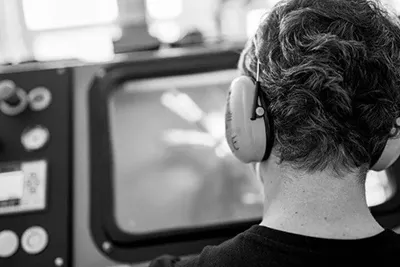
Process
Fine glass beads are blasted onto the surface of the part using compressed air. The top layer is mechanically compacted and smoothed without significantly removing material.
Effects on the Part
- Uniform matte, satin-like surface
- Removes discoloration and light impurities
- Increases surface compaction and therefore fatigue strength
Limitations
- Does not reduce coarse roughness
- Risk of deformation for very thin-walled structures
Note: All our additively manufactured metal parts are glass bead blasted by default unless another post-processing method is requested. Blasting is included in the price.
1.2 Electropolishing
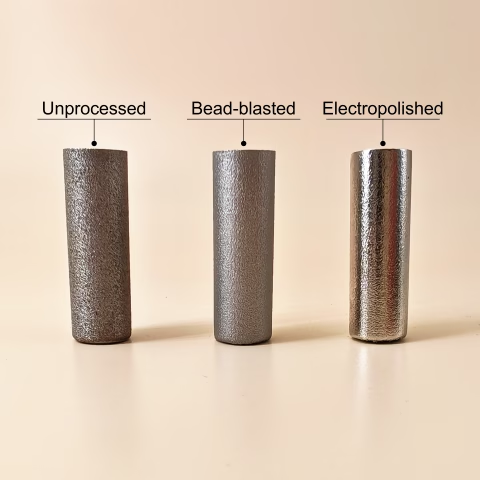
Process
During electropolishing, the part is immersed in an electrolytic bath and connected as the anode. When an electric voltage is applied, microscopic material peaks are preferentially removed, resulting in a smooth and clean surface.
Effects on the Part
- Smooth, shiny surface
- Improved corrosion resistance
- Reduced friction and improved cleanability
Limitations
- Very delicate geometries may experience slight edge rounding
- Not suitable for aluminum due to spontaneous oxidation and lower process stability
Available for
1.3 Vibratory Finishing
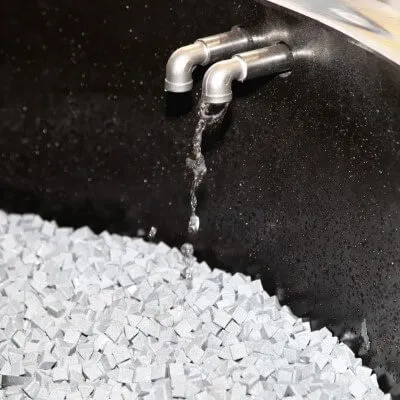
Process
The parts are placed together with abrasive media and a liquid in a vibrating or rotating drum. Friction between the part and the media removes and smooths the surface material.
Effects on the Part
- Reduced surface roughness
- Uniform, matte surface
- Deburring and light edge rounding
- Improved tactile feel and clean appearance
Limitations
- No selective removal at specific locations possible
- Not ideal for very delicate or thin-walled structures (risk of breakage)
- Small cavities or internal channels are hardly reached
2 Heat Treatment
During the additive manufacturing process, residual stresses and irregular microstructures can develop within the parts. Targeted heat treatments can reduce these stresses and improve the mechanical properties. The most common method is stress relieving, which releases internal stresses to ensure dimensional stability and machinability.
2.1 Stress Relieving
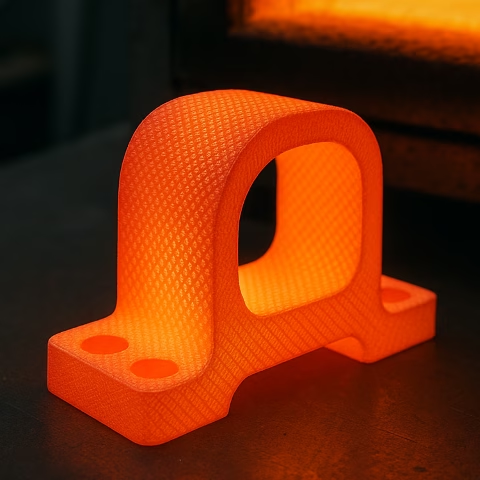
Process
During stress relieving, additively manufactured metal parts are heated in a controlled manner to moderate temperatures and held for several hours. This releases the internal stresses created during 3D printing without significantly altering the microstructure of the material.
Effects on the Part
- Reduction of residual stresses
- Improved dimensional and shape stability
- Reduced risk of cracking during mechanical or thermal post-processing
Limitations
- Slight dimensional changes (e.g., shrinkage or minor distortion) possible
- Relatively complex and cost-intensive process
3 CNC Machining
Additively manufactured metal parts achieve their final dimensional accuracy through CNC machining. Functional surfaces, holes, and threads are precisely post-processed to ensure flawless assembly and proper fit. The combination of additive manufacturing and conventional machining enables the production of complex yet dimensionally accurate components.
3.1 CNC Machining
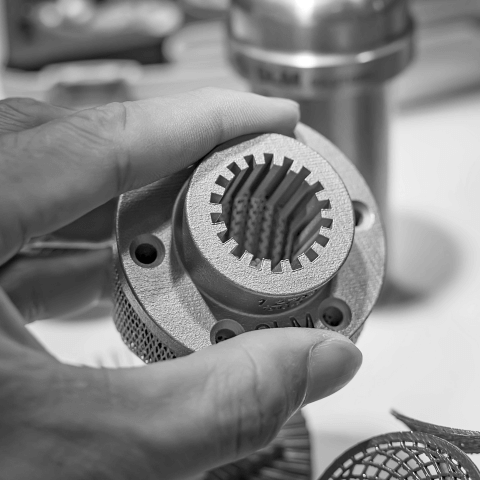
Process
In CNC machining, additively manufactured parts are post-processed on precise milling centers. Functional surfaces can be machined, holes created, and threads and fits produced. This enables tight tolerances and high dimensional accuracy.
Effects on the Part
- High precision on functional and mating surfaces
- Ability to integrate threads, holes, and fits
- Improved assemblability and interchangeability of components
- Combination of additive design freedom and conventional dimensional accuracy
Limitations
- Only possible for accessible surfaces and geometries
- Additional processing steps increase effort and cost
4 Coating
Coatings serve both to protect and to visually enhance 3D-printed metal parts. They improve corrosion resistance, surface hardness, and appearance. Depending on the requirements, different processes are used—from classic wet painting to robust powder coating. Both options offer versatile design possibilities in terms of color and gloss level.
4.1 Wet Painting
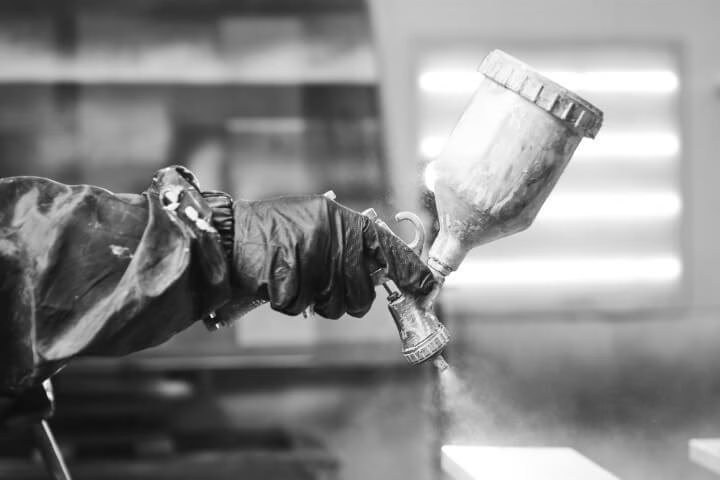
Process
In wet painting, a liquid paint layer is applied to the part and then dried.
Effects on the Part
- Custom color design and attractive appearance
- Basic corrosion protection
Limitations
- Lower mechanical durability compared to powder coating
- More susceptible to scratches and chemicals
- Additional process step increases processing time and cost
4.2 Powder Coating
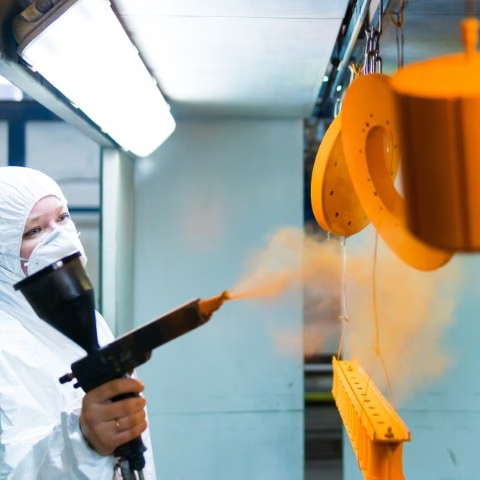
Process
In powder coating, a dry, electrostatically charged powder is applied to the part’s surface and then cured in an oven. The powder melts into a uniform, durable layer.
Effects on the Part
- High corrosion and wear resistance
- Very robust and impact-resistant surface
- Wide variety of colors and textures
Limitations
- Limited coating of very fine or deep areas
- Reduced detail accuracy for fine engravings or small lettering
- Slightly thicker coating compared to wet painting
